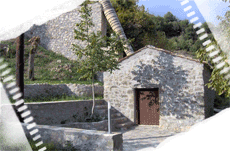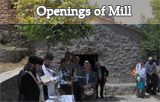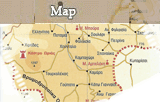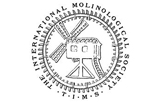The Morogiannis Water mill
T he Morogiannis water mill is located at the village of Kato Giannei that belongs to the municipality of Falesia in the Megalopolis prefecture of Arcadia, in central Peloponneese, at the foothills of North Taygetos, in an area of particular natural beauty, part of the estate of the Morogiannis family. The river Karnion, a side river of the Alfios river, runs through the estate, carrying water throughout the year.
Downstream the river Karnion there were known to exist three stone-build bridges: the three-arch bridge north-west of Leontari (built in 1890) bridging the crossing to Paradisia and Messinia, the two-arch bridge at Potamia (1906) and the one-arch bridge at Palaiomonastiro (1924), between Kambohori and Kamara. A number of stone water fountains are preserved in the area since the years of the Turkish occupation (Upper and Lower Fountain at Leontari, Ano Kamara fountain) or later (Saint-Nicholas fountain at Leptini ca. 1908, Saint-John fountain at Dyrrahi).
 I n the Megalopolis prefecture until the first years after the 2nd World War more than 65 water-powered units were operating, 36 of which in the streams of North Taygetos. According to P. Sarantakis, during the 19th and into the first years of the 20th century two were the main areas of water-milling activity in Falesia: the area around Dyrrahi (already in an agreement confirmation document from 1679 the Pelekasis mill at Dyrrahi is mentioned, while mention of the mill at Taratsa appears in a document of the Rekitsa monastery dated from 1714) and the Saint-John stream at Gianneika. “The first of the four mills that were powered by the waters of the Kefalari spring belonged to the Mboura monastery.
I n the Megalopolis prefecture until the first years after the 2nd World War more than 65 water-powered units were operating, 36 of which in the streams of North Taygetos. According to P. Sarantakis, during the 19th and into the first years of the 20th century two were the main areas of water-milling activity in Falesia: the area around Dyrrahi (already in an agreement confirmation document from 1679 the Pelekasis mill at Dyrrahi is mentioned, while mention of the mill at Taratsa appears in a document of the Rekitsa monastery dated from 1714) and the Saint-John stream at Gianneika. “The first of the four mills that were powered by the waters of the Kefalari spring belonged to the Mboura monastery.
Its operation started during the second Venetian occupation and lasted until 1925 when the monastery was burned down during the Orlof uprising (…). The second period of operation lasted until 1925 when the mill was finally abandoned. Nearby are the ruins of the mill of Taratsa, the mill of Lagos (nowadays the mill of Morogiannis) and somewhat further to the south the mill of Theofilopoulos that ceased its operation in 2000 when its owner passed away. At the entrance to the stream, near Goupata, a water mill was given as a dowry to the “Old-Man from Moreas” from his father-in-law Karousos”. Water mills were also operating at Akovo, Kamara, Kambohori, Petrina, Soulari and Skortsinou.
T he Morogiannis watermill is a traditional stone-built water-powered mill of the eastern type (with horizontal wheel) from the beginnings of the 19th century t that was operated by the Morogiannis family until 1973, perhaps one of the last operating mills at that time throughout Greece. The mill was bought around 1926 (or 1913) by Konstantinos Hristakis, the father of the wife of Athanasios Morogiannis ((father of the present owners of the mill Kostas and Fotis Morogiannis) from the earlier owners, the family of a captain of the Greek Revolution, Lagos from Leontari.
I n a neighboring piece of land, estate of the Mboura monastery, the watermill of the monastery, furnished with a horizontal iron wheel (fteroti) and a large-diameter wooden barrel, was reconstructed and re-operated around 2000. The metal and wooden parts of the mill’s mechanism were reconstructed under the supervision and with the personal handwork of Athanasios Morogiannis. The west wing of the small building, where the miller used to live, was refurbished into a small guest house. To the east of the mill there is a small chapel devoted to Saint John, part of the monastery estate as well.
In a little distance to the south-east, there exist the ruins and the remains of the mechanical parts of a water-powered olive-mill and an outdoor washing whirl that belonged to Konstantinos and Georgios Morogiannis, sons of Efstathios Morogiannis, brother of Athanasios Morogiannis. Another watermill is located in a short distance, the watermill of Taratsa.
T he Morogiannis watermill was fully reconstructed in 2005, faithfully preserving its traditional architectural design and function, with European funds.The restoration report was supplied by Panos Tsakopoulos, an architect from Tripolis, the construction work was carried out by Hristos Dimopoulos, a civil works undertaker from Kamara, and the project supervision by Tasos Stathoulopoulos, a civil engineer from Megalopolis. Today, it is regularly operated as a watermill, milling wheat and other cereal grains, while it houses a small museum with exhibits from the agricultural life of the villagers, mostly pieces of equipment locally employed for agriculture, farming and textile processing. The mill was officially inaugurated in May 2006, and became a member of the Institute of Greek Mills.












